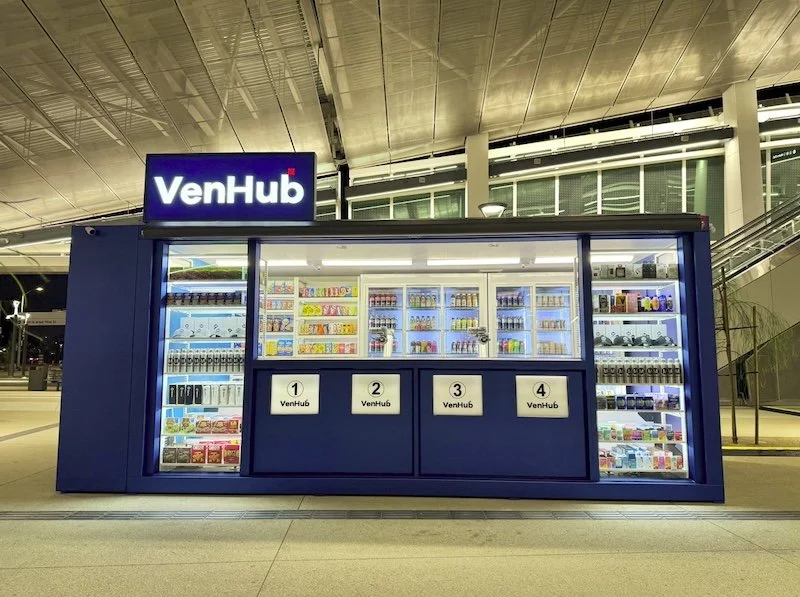2018 retail technology predictions part 4
“For some time now, we’ve been saying that adding value to the customer experience is imperative to the survival of the High Street. Figures published throughout 2017 have screamed High Street demise and retailers need to take action in 2018 if they are to survive. Not looking far from home, all High Street retailers are sitting on a mountain of basket data that could be their saving grace, if they would but harness it. By tapping into the Point of Sale through a simple transaction API, retailers can gain access to full SKU basket data and find out who their customers are, what they’re buying and when.
With this basket data insight, retailers could create a complete end-to-end mobile transaction experience, with loyalty points/stamp collection and instant rewards, as well as itemised digital receipts, delivered to every customer in a single moment – creating a fully immersed in-store experience. One retailer, who took full advantage of their basket data this year was Vietnamese fast food chain HOP, which wanted to increase the frequency of purchases on a slow business day – Tuesdays. Through basket data insight, in 2017 the fast food chain created a campaign that offered double loyalty points to all customers who came in on that day. Activity on a Tuesday for the month after the campaign launched looked very different: Unique customers increased by 85%, transactions went up 51% and revenue increased by 61%. We predict many more retailers will follow HOP’s example in 2018.” Alain Falys, Co-founder and Chairman, Yoyo
Also of interest: 2018 retail technology predictions part 1
2018 retail technology predictions part 2
2018 retail technology predictions part 3
“Mainstream media would have you believe that the future of retail is nothing short of doomed. Whilst I’m not denying that it’s been a tough ride for some retailers, particularly post-Brexit in the UK, simply pointing out the issue is only the beginning. The fact is, many physical stores are losing out to online competition. As we move into 2018, we need to look to tackle the underlying problems, the main one being that the physical shopping experience is simply no longer compelling enough to the average shopper. And let’s not overlook the fact that the retail industry is going full circle; successful online-only companies are now entering into the physical realm, building their own new networks of shops; just look at the recent Amazon takeover of Whole Foods. Competition for physical retail will now not only come from online, but also from those online who are now moving offline.
Many stores give very little thought to ambience as part of the store concept, only considering things like music as something pleasant in the background for customers and staff. The fact is, to stand out from the crowd, individual stores need to be making a statement that tells shoppers that they have now left the mall and are entering into a new brand experience. Take a shop like Hollister, for example, who do this really well, appealing to the senses, sight, hearing, and even smell as you enter their stores.” Ola Sars, CEO & Founder, Soundtrack Your Brand
“One of the type of attacks that we will see gain more traction in 2018 is the website attack. With the growing use of online services (checking accounts, merchant accounts and PoS systems, etc. now going through the web) the risk of attacks is large and has the potential to affect any institution using these services, as it opens access to institutions’ backend databases, document stores and applications all within easy reach.
This type of attack is very hard to find, but it is incredibly easy for attackers to undertake. Because an attacker can gain access to the website via high jacking a user’s request, and then by simply making a small change to the code to redirect payment information their way while not stopping the correct path of the request, it makes it easy for attackers to get access to critical data without alerting any red flags. Critically, the website is no longer just a marketing tool. It has become a business tool, and as such, it now needs to be properly protected from attacks and placed inside a firewall, and preferably completely encrypted, so that attackers are unable to change, manipulate and delete code to their advantage.” Simon Bain, BOHH Labs
“Between calls, texts, chatbots, and emerging voice assistance channels like Amazon Alexa and Google Home, customers have more options than ever to interact with brands. We can expect even more communication channels to emerge in 2018, adding to the complexity of how brands serve their customers. A breaking point is imminent for the frontline employees who are on the receiving end of increasingly complicated customer issues.
New research shows that 56% of customer service agents are already challenged with complex issues. What’s more, 60% of these employees say that their companies don’t provide adequate technology to handle these problems, leaving them stressed out and increasingly unengaged. In order to continue to deliver on the promise of a great customer experience, brands must refocus on their people and technology integrations. In doing so, employees become empowered to quickly make informed decisions and deliver on the service modern consumers expect.” Tom Goodmanson, President and CEO, Calabrio










Continue reading…